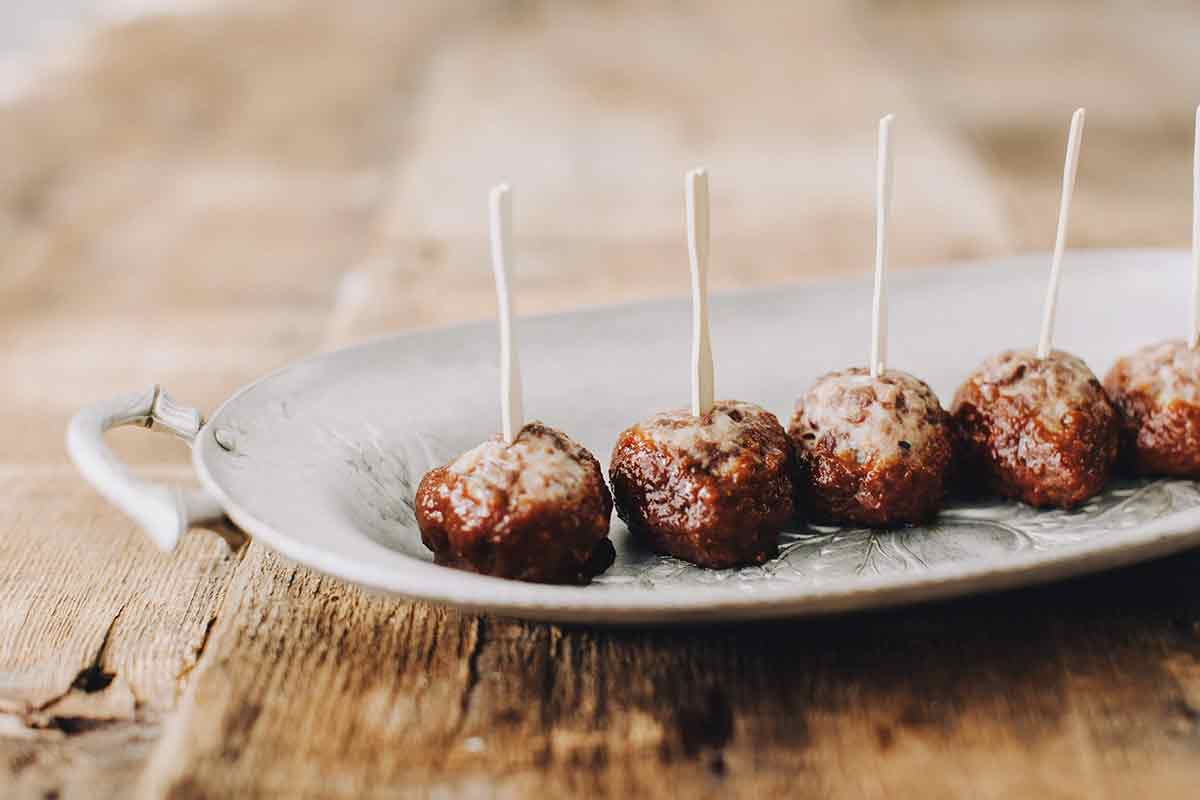Jon Wipfli lived in Montana – Montana, for Pete’s sake – for a period of time and never hunted while he was there.
He didn’t hunt when he lived in Oregon either, or New York City.
He regrets all that now.
But he’s come back to his roots. The 34-year-old native Midwesterner grew up in a hunting family. He wandered the woods with them, if indifferently, as a teen.

When it comes to cooking venison, using advanced techniques can lead to wonderful meals.
When he moved back to Minnesota in the mid-2000s, he took up hunting again. Now, he’s serious about it.
He’s even taken to writing about it.
Wipfli – a classically trained chef — is author of a new cookbook, “Venison, the Slay to Gourmet Field to Kitchen Cookbook.”
Part one of the 90-page book starts is all about hunting ethics and eating.
Don’t expect too many secrets on how to kill a buck, though.
“Some guys are great hunters who write about cooking,” Wipfli said.
“The way I approached this book was from a chef’s perspective first, a hunter’s second. Which is what I am. I’m not as efficient a hunter as I am a chef.”
That’s not to say he doesn’t kill his share of deer. He does OK.
But his real expertise is in the kitchen, as the rest of the book attests.
Part two describes how to butcher a deer and break it into parts. It’s very detailed, featuring step-by-step instructions with photos.
He devotes a lot of space to hat because it’s so important to the end product, Wipfli said.
When cooking venison, it’s important to know where on the deer a particular cut of meat came from.
“You kind of have to learn a little bit about what muscle groups you’re working with,” Wipfli said.
Meat from the front shoulders of deer, for example, generally has more connective tissue, Wipfli said. It’s among the most flavorful cuts.
“But they also take a little more finesse, a little more cooking to make tender,” he said.
Front shoulder meats, he said, are often best used in stews, sausages, crockpot recipes and the like.
The hindquarters of deer, by comparison, have less fat and less connective tissue. Such lean cuts can be turned into steaks that require shorter cooking times. Think eye of round steaks, he said.
The middles of deer, meanwhile, are a mix.
The loins and tenderloins are the most tender part of a deer, while the ribs need long, slow cooking.
It’s part three of Venison, though, that really makes the book what it is. It offers recipes for all parts of a deer.
There’s one recipe for liver and another for heart, Wipfli’s favorite muscle. Many hunters leave those muscles in the woods, though, so most of the recipes focus on what hunters most often use.
That’s not to say the recipes are overly simple, though.
None of the recipes are overly complicated, nor do they feature ingredients that aren’t readily available everywhere, Wipfli said.
But some will test home cooks in terms of techniques.
That’s the goal.
“When I was writing, I really wanted to find a way to blend my high-end kitchen experiences, for lack of a better term, with something more approachable,” Wipfli said.
No matter the recipe or cooking technique, though, there’s one thing cooks need to remember about venison, Wipfli said.
“Venison by nature is a lean protein. So I think it’s easy to overcook,” he said. “If you cook a venison steak medium well to well, you’re going to have a much drier steak that you want.”
Given that, he often incorporates some kind of fat into his recipes.
That might mean putting fatty should meat like pork into his grinds, for example. If he’s serving steak, he might pair it with something like mashed potatoes made with heavy cream and a chimichurri sauce with ginger oil.
The key is not to go overboard. Some people try to mask the taste of venison, thinking it’s gamey. And he has recipes that incorporate things like jalapeno peppers.
But handled properly in the field, butchered correctly and cooked according to the cut of meat, venison can shine on its own, he said.
“It’s all about balance with anything you cook. You don’t want to overpower anything,” Wipfli said. “You want just enough of those other tastes to notice them.”
His recipes offer a start. But he encourages people not to get hemmed in either.
“Experiment in the kitchen,” Wipfli said. “It makes cooking a lot more fun.”
Get the book
“Venison, the Slay to Gourmet Field to Kitchen Cookbook” is available from Amazon, Barnes & Noble and other retailers. The hardcover version is $25. Digital versions are available, too.

Cooking venison can mean preparing gourmet offerings like these meatballs with cherry barbecue sauce.
Try a recipe
In the meantime, here’s one recipe from the book for meatballs with cherry barbecue sauce. It uses a 50-50 mix of venison and ground pork shoulder.
Meatball ingredients
- Grapeseed oil to evenly coat the bottom of your pan, plus additional for greasing the pan
- 1 small white onion, diced
- 1 tablespoon minced fresh thyme
- ½ teaspoon ground cloves
- 1 small clove garlic, diced
- ½ teaspoon ground juniper berries
- 2 cups fresh white breadcrumbs (from about 12 slices of bread)
- 1 cup whole milk (do not substitute low-fat milk)
- 1 pound ground venison shoulder
- 2 eggs
- 1 pound ground pork
- ½ tablespoon kosher salt
Directions
Place the oil, onion, garlic, thyme, cloves and juniper berries in a sauté pan and slowly cook over very low heat for 45 minutes or until all the moisture from the vegetables is gone and they are completely soft. Make sure no colors develop in the pan while cooking.
Once cooked, transfer the vegetables to a mixing bowl and let them cool in the fridge.
Next, take the 12 slices of bread, remove their crusts, and mince them into tiny crumbs. In a separate mixing bowl, add the breadcrumbs and pour the milk over the bread slowly until it looks like a mucky swamp bottom. The bread should absorb all the liquid and there shouldn’t be any excess. If there is excess milk, pour it out of the bowl and discard it.
Place that mixing bowl in the refrigerator to keep it cool.
Place the venison and pork into the bowl of a stand mixer fitted with the paddle attachment. Add the bread-and-milk mixture along with the cooked vegetables and salt, and turn on the mixer to a medium-low speed. Add the eggs one at a time and mix until they’re fully incorporated. Let the paddle spin for about a minute, or until you notice that the meat is starting to stick together on its own accord and is beginning to look gummy.
At this point, remove a small patty of the meatball mix and pan-fry it. Taste it for salt and texture — it shouldn’t crumble — and adjust the salt in the meatball mix if necessary. If your tester crumbled, continue mixing the meatball mixture until it becomes more cohesive.
Once the meatball mix is ready, preheat the oven to 450 degree) and lightly coat a rimmed baking sheet with grapeseed oil. Roll the meatballs into 1½-ounce balls, just bigger than a half-dollar coin, and place them on the sheet.
Bake until for about 20 minutes or until they have an internal temperature of 155 degrees.
Cherry Barbecue Sauce
Ingredients
- 2 tablespoons butter
- 1 yellow onion, small diced
- 2 cloves garlic, minced
- 1 tablespoon minced fresh ginger
- ¼ cup ketchup
- 1½ cups tomato sauce
- 1½ cups fresh pitted cherries
- ²⁄³ cup packed dark brown sugar
- ¹⁄³ cup freshly squeezed orange juice
- ¼ cup champagne vinegar
- 1 tablespoon dried basil
- 1 teaspoon cayenne pepper
Directions
In a large pot over medium-low heat, melt the butter. Add the onions and cook for 5 minutes or until they appear slightly translucent. Next, add the garlic and cook for about 30 seconds. Then add the remaining ingredients and stir to combine. Softly simmer until thickened, stirring occasionally, about 30 minutes.
Place the sauce into a blender and blend until smooth. Add more orange juice if necessary to thin it out if the barbecue sauce is too thick.
To finish poke a skewer into each meatball and dip the meatball halfway into a bowl of the cherry barbecue sauce. Serve immediately on a plate, skewer side up for easy access.









